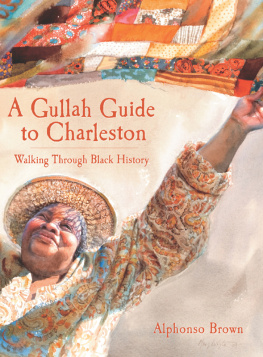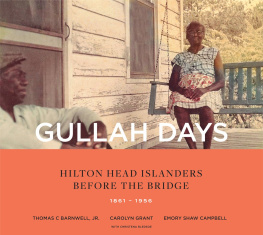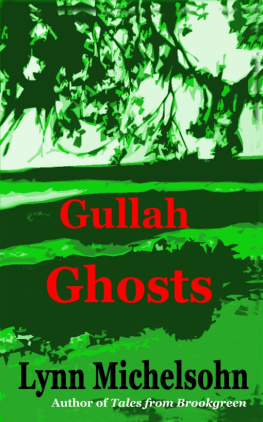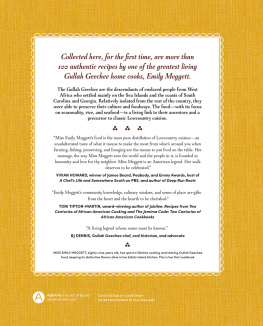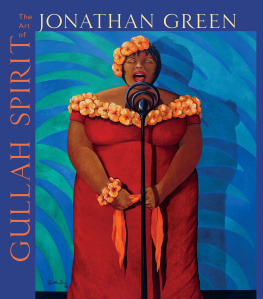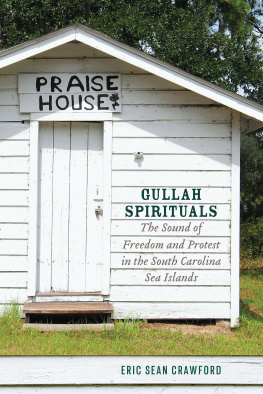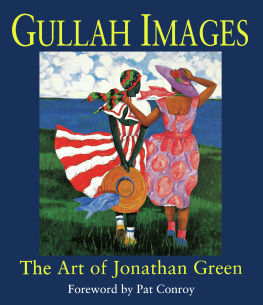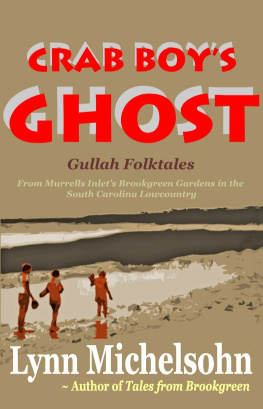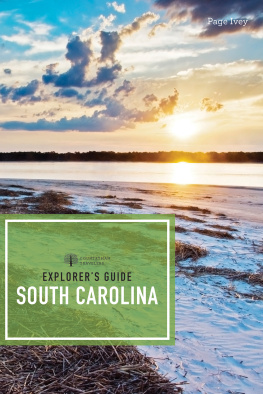


Published by The History Press
Charleston, SC 29403
www.historypress.net
Copyright 2008 by Alphonso Brown
All rights reserved
Cover art: (front) Detail from Jubilation by Mary Whyte, (back) Tending by Mary Whyte. Both paintings are courtesy of Coleman Fine Art. Please visit www.colemanfineart.com for more information.
First published 2008
Second printing 2009
Third printing 2010
Fourth printing 2011
e-book edition 2012
ISBN 978.1.61423.267.4
Library of Congress Cataloging-in-Publication Data
Brown, Alphonso.
A Gullah guide to Charleston / Alphonso Brown.
p. cm.
print edition ISBN 978-1-59629-392-2
1. Charleston (S.C.)--Guidebooks. 2. African Americans--South Carolina--Charleston--History--Anecdotes. 3. Gullahs--South Carolina--Charleston--History--Anecdotes. 4. African Americans--South Carolina--Charleston-Biography--Anecdotes. 5. Gullahs--South Carolina--Charleston--Biography--Anecdotes. 6. Historic sites--South Carolina--Charleston--Guidebooks. 7. Historic buildings--South Carolina--Charleston--Guidebooks. 8. Charleston (S.C.)--Buildings, structures, etc.--Guidebooks. 9. Charleston (S.C.)--History-Anecdotes. 10. Charleston (S.C.)--Biography--Guidebooks. I. Title.
F279.C43B76 2008
975.791500496073--dc22
2008007848
Notice: The information in this book is true and complete to the best of our knowledge. It is offered without guarantee on the part of the author or The History Press. The author and The History Press disclaim all liability in connection with the use of this book.
All rights reserved. No part of this book may be reproduced or transmitted in any form whatsoever without prior written permission from the publisher except in the case of brief quotations embodied in critical articles and reviews.
CONTENTS
ACKNOWLEDGEMENTS
How can one forget the breakfast table discussions at Mount Zion AME Church at 5 Glebe Street following the 7:30 a.m. services? I can still hear the late Sarah Findley Dowling saying, Oh God boy, please! We can say Calhoun, we mean to say Killhoun! On another subject, the late Pauline Graves would tell the story of how, during the civil rights movement, Reverend Rip Lemon washed his clothes in the whites only section of the laundromat. When confronted by the owner, he said, Doesnt that sign say whites only? Well, I am doing my white clothes. Over there under the colored sign are my colored clothes. Thelma Sumpter kept everyone abreast on what was happening in the AME Church. Her husband, Reverend B.F. Sumpter was a minister at Mount Zion and an elder in the church. The late Julia Pope brought me books and more books of old Charleston. The late Moses Moultrie, who tried to compete with the rapid tongues of the ladies, would finally get a word in edgewise. He said, We didnt call that thing Paddy Wagon or Black Maria, we call it Black Lucy. Tons of information was discussed at the table and sometimes I couldnt finish my breakfast for trying to write everything down. The entire Mount Zion Church family was very supportive and gave out information at a whim.
I needed a course in shorthand when listening to Felder Hutchison. Mr. Hutchison is a walking Charleston encyclopediathats what I call him. Josephine Smith Cannon, a great friend, co-worker and typist, held a big stick over my head demanding, Write, write, write and never stop. She was serious!
It pays to have English majors as friends. My sister-in-law Sandra Goodwin Harrison and her friend (and my friend) Emma Johnson are proofreader perfectionists! Even closer to home is my son, Reverend Howard Brown, who graduated from Clemson University with a degree in English. Whenever I needed something proofread, I would call him and tell him, Its payback time! My son Terrence loves to sing, so I often put on some of his music to keep me inspired. My son Joel would admonish me about what I could and could not write. Thank God they are all married and out of my house! My wife LaQuines would bring them back if she could, but I keep her busy proofreading.
My uncle Teet, whose real name is Reverend George Welch Brown, deserves a whole paragraph all to himself. He was my uncle, mentor, advisor, historian and, most of all, my friend. We would talk for hours about family history. He was a man who was very knowledgeable about people and his environment. The man had a sixth sense! I have the same sixth sense. We got this from his mother, and my grandmother, Phyllis Steplight Brown. My next book will be about stories he shared with me. Thank God he wasnt a fast talker and I was able to write down everything he said.
This book is dedicated to the memory of my Uncle Teet, who died on January 25, 2008, at the age of eighty-five.
GULLAH HISTORY
Gullah is an English-based, creolized language that naturally evolved from the unique circumstances of, and was spoken by, the slaves in South Carolina and Georgia. It is not a written language. It is sometimes referred to as the patios of the Lowcountry. Along with many of the African and English words and expressions, it also contains some other foreign languages, or whatever could be picked up, depending on the nationality of the slave owner. The word Gullah is believed to be a mispronunciation of the African word Gora or Gola, which were names of tribes living in Sierra Leone, West Africa. The Vai people, or Gala, or Gallinas, are believed to be the African connection for the Gullah people in the Sea Islands. These Africans brought with them skills in science, construction, agriculture, animal farming, teaching and many other areas. They had over ten thousand years of experience in many of the developed civilizations in the world.
The South Carolina and Georgia Sea Island coast has many isolated islands that were inhabited by blacks long before, and following, the Civil War. The dual residency of some slave owners and the isolation that existed, especially after the Civil War, contributed to the proliferation not only of the language, but also of the African culture and traditions of the slaves. Their ancestors still practice (in some rural areas) the tradition of placing topsy-turvy medicine bottles or pills on the graves of the deceased. The old tradition of covering the mirror in a room after a loved one dies is still observed by many. This is to keep the deceaseds image from reflecting in the mirror and causing it to spot. The yard swept clean will keep snakes away. Holding ones breath when passing a graveyard will not disturb the dead. Digging a grave northsouth means the person died after having been fixa victim of voodoo, witchcraft, a hex. It is believed that the spirit cannot rest turned crossways and will always haunt the unknown assailant, who will usually die in less than a week. The homemade long-handled hoes were not only used for reach in the fields, but also for killing snakes. The ceilings of the porches are painted blue to ward off evil spirits and also keep the bugs away. And the list goes on.
The practice of root medicine is still used by many blacks and some whites today. Benin, West Africa, is still known for its traditions of root medicine and witchcraft. Root medicine was used for both good and badevil and greed made it more bad than good. Except for the few white doctors, who would secretly help slaves before and after freedom, the only medical help available to blacks in the New World was the people who knew the art of root medicine. These individuals who used their knowledge for good were not feared, and today they would be referred to as herbalists.
Next page
